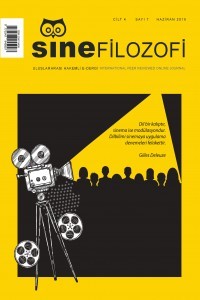Video Sanatının Düşünce Sinemasına Etkisi
The Effect of Video Art on Intellectual Cinema
Author(s): Kurtuluş ÖzgenSubject(s): Cultural history, Visual Arts, Evaluation research, Film / Cinema / Cinematography
Published by: Serdar Öztürk
Keywords: Video Art; Intellectual Cinema; Viewer;
Summary/Abstract: Video Art; in the beginning of 1960’s, was born when a group of artists (Neo-Realists, Fluxus Participants) started to use “video-image” as tool of objection – opposition- rebellion against Television which is the hegemonic face and sound of power. It is possible to define video as the ‘Crossbreed Child’ of photography, cinema and television. In Video Art, the artist invites the viewer (experiencer) into the art process as a principal actor. Most of the time, the experiencer is aware that s/he is taking an active role in this process. Video Art is only completed when the experiencer is in the perpetrator position. In video art, the experiencer abandons the action of viewing (passive and dreamy voyeuristic experience) and becomes the creative partner with his/her thoughts, interpretation and body. Intellectual Cinema also takes an opposing stance against the mainstream (commercial) cinema which presents this magical-dreamy viewing experience and degrades its viewers into passive consumers. The movies which are identified in this Intellectual Cinema cluster also demand a similar pedagogy as in Video Art. The intention of these movies is to have the viewers actively think and question during (and after) the viewing experience.
Journal: SineFilozofi
- Issue Year: 4/2019
- Issue No: 7
- Page Range: 47-60
- Page Count: 14
- Language: Turkish

